
Amiga demos are demos created for the Amiga home computer.
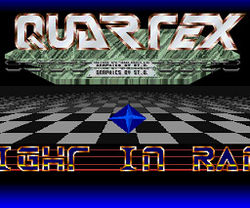
A crack intro, also known as a cracktro, loader, or just intro, is a small introduction sequence added to cracked software. It aims to inform the user which "cracking crew" or individual cracker removed the software's copy protection and distributed the crack.
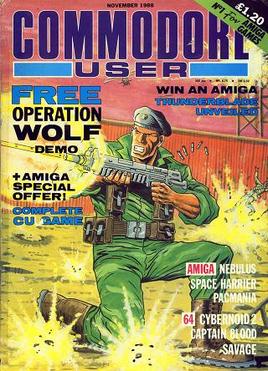
Commodore User, later renamed to CU Amiga, is a series of American and British magazines published by Commodore International.
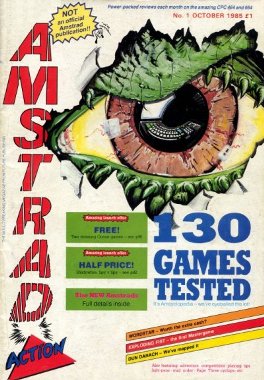
Amstrad Action was a monthly magazine, published in the United Kingdom, which catered to owners of home computers from the Amstrad CPC range and later the GX4000 console.

The Commodore 64 (C64) demos are demonstrations of what can be done to push the limits of the Commodore 64 computer, made by programmers, musicians and artists.

Amiga Power (AP) was a monthly magazine about Amiga video games. It was published in the United Kingdom by Future Publishing and ran for 65 issues, from May 1991 to September 1996.

A type-in program or type-in listing was computer source code printed in a home computer magazine or book. It was meant to be entered via the keyboard by the reader and then saved to cassette tape or floppy disk. The result was a usable game, utility, or application program.
Grapevine is the common name for plants of the genus Vitis.

The One was a video game magazine in the United Kingdom which covered 16-bit home gaming during the late 1980s and early 1990s. It was first published by EMAP in October 1988 and initially covered computer games aimed at the Atari ST, Amiga, and IBM PC compatible markets.

Zero was a video game magazine in the UK, published monthly by Dennis Publishing Ltd. between November 1989 and October 1992. It won the InDin Magazine of the Year award in both 1990 and 1991, and was also briefly the best-selling multi-format 16-bit computer magazine in the UK.
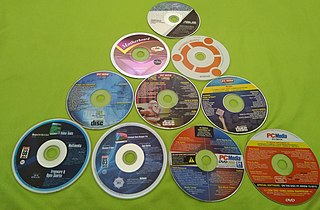
Covermount is the name given to storage media or other products packaged as part of a magazine or newspaper. The name comes from the method of packaging; the media or product is placed in a transparent plastic sleeve and mounted on the cover of the magazine with adhesive tape or glue.

A disk magazine, colloquially known as a diskmag or diskzine, is a magazine that is distributed in electronic form to be read using computers. These had some popularity in the 1980s and 1990s as periodicals distributed on floppy disk, hence their name. The rise of the Internet in the late 1990s caused them to be superseded almost entirely by online publications, which are sometimes still called "diskmags" despite the lack of physical disks.

Official Xbox Magazine (OXM) was a British monthly video game magazine which started in November 2001 around the launch of the original Xbox. A preview issue was released at E3 2001, with another preview issue in November 2001. The magazine was bundled with a disc that included game demos, preview videos and trailers, and other content, such as game or Xbox updates and free gamerpics. The discs also provided the software for the Xbox 360 for backward compatibility of original Xbox games for those without broadband and Xbox Live access. From January 2012, OXM no longer included a demo disc. In mid-2014, the U.S. version was merged into the UK version on the website, which lasted only a few months until Future plc announced that it was closing its website along with all the other websites that Future has published, including Edge and Computer and Video Games. In February 2015, OXM and all of Future's video game websites were redirected into GamesRadar.

Epic is a space combat simulation game developed by Digital Image Design and published by Ocean Software for the Commdore Amiga and Atari ST in early 1992. A port to MS-DOS also appeared in the same year, followed by a version for the NEC PC-9801 in 1993. A sequel, titled Inferno, was released in 1994 for PCs only.

Hugi is one of the longest lasting, frequently released demoscene and underground disk magazines (diskmag) for IBM-PC.
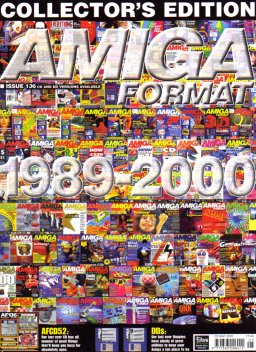
Amiga Format was a British monthly computer magazine for Amiga computers, published by Future Publishing. The magazine lasted 136 issues from 1989 to 2000. The magazine was formed when Future split ST/Amiga Format into two separate publications.
Amiga software is computer software engineered to run on the Amiga personal computer. Amiga software covers many applications, including productivity, digital art, games, commercial, freeware and hobbyist products. The market was active in the late 1980s and early 1990s but then dwindled. Most Amiga products were originally created directly for the Amiga computer, and were not ported from other platforms.
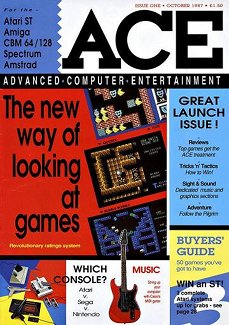
ACE was a multi-format computer and video game magazine first published in the United Kingdom by Future Publishing and later acquired by EMAP.

Miggybyte was a free disk-based magazine for the Amiga range of computers, published by Pickled Fish Software and edited by Ben Gaunt. From 1995 to 1997 twelve issues were published all being on a single floppy disk only.
Phenomena (PHA) was a Swedish Demogroup making Amiga demos that was productive during the formative years of the Amiga Demoscene founded in 1987.













